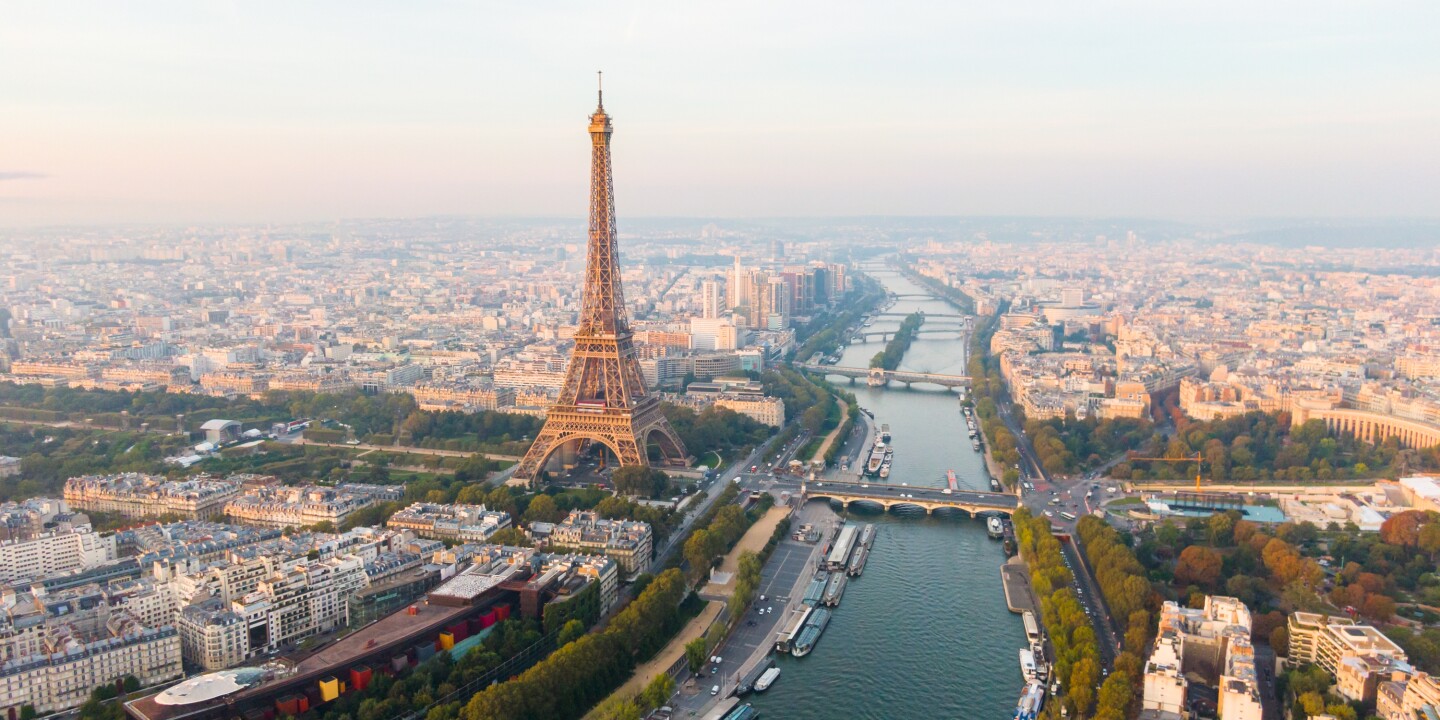Seine-sational news or a splashy mistake? That’s the question swirling among Parisians and visitors as city officials reopened the River Seine to public swimming on July 5—for the first time in more than a century. The notoriously polluted and odious waterway had been off-limits since 1923. Although Paris pledged a $1.5 billion (1.4 billion euro) cleanup in its bid to host the 2024 Summer Olympics, the river remained closed to the public until this year. Now three free swimming spots have opened along the riverbank: one near Notre Dame Cathedral, another by the Eiffel Tower, and a third in the 12th arrondissement near the Simone de Beauvoir footbridge.
Paris’s ambitious effort to revive the Seine—once a dumping ground for 19th-century human waste—started in the 1990s, and in 2015 the Greater Paris Sanitation Authority created a plan to make the Seine safe for swimmers by 2024, in time for the Summer Olympics. Baptiste Rolland, prefect and chief of staff for the Île-de-France region, said in a press statement posted on the government’s Instagram account that nearly 280 projects kicked off to modernize sewer systems, improve infrastructure, and crack down on boats dumping waste into the river and instead develop connections to the city’s main sewage system.
Whether that effort would succeed looked questionable even just a month prior to the Olympics. Elevated levels of e.coli were found shortly before the Opening Ceremony. However, after additional cleanup efforts—and a high-dive spectacle by Paris Mayor Anne Hidalgo, who took a dip on July 17, 2024, to prove the river’s safety—the city pulled it off. The Seine not only provided a stunning backdrop for the Olympic Opening Ceremonies but also hosted several swimming events. For the next year, officials continued to test the water, adapting to seasonal changes and climate-driven storms, while they finished construction on new public swimming decks. Now those public areas are open in time for summer, and all residents and travelers are invited to give the water a try. By 2028, the aim is to make swimming possible along further stretches of the Seine.
“Personally, I felt that the river was safe and clean to swim in,” Tanishk Saha, a social media reporter for France 24, tells Afar. Saha made a splash by jumping in himself on opening day while reporting for the English-language news outlet. While on the scene, he spoke with Paris Deputy Mayor Pierre Rabadan, who told him that water quality continues to be tested daily.
“It was warmer than I expected, but it was clear and there were safety mechanisms in place,” he wrote over WhatsApp. “For example, the day after I went in for a swim, it rained in Paris and the swimming was stopped (given that rainfall influences the authorities’ ability to ensure that the water quality is good enough to swim in).” Saha adds that he’d definitely go again and has been recommending it to friends as well.
But some Parisians are still reluctant to take the plunge. “There’s no way I’d swim in the Seine,” says Sébastien Caron, the CEO and founder of Mapstr, a Paris-based map app. “I’ll save my laps for a real beach or a filtered pool.” He shudders at the thought of a storm transforming the river into what he calls “an open sewer,” since heavy rain has been known to overwhelm the city’s antiquated sewage system, sending polluted water overflowing into the Seine.
The Surfrider Foundation, a U.S.-based nonprofit dedicated to protecting the world’s oceans and beaches, closely monitored water quality in the river in the lead-up to the Olympic Games and says it is satisfied with the efforts the city has made to mitigate pollution. However, the group would like to see more comprehensive measures moving forward. “Only bacteriological pollution is taken into account,” says Carla Araya, Surfrider media relations assistant Europe. “Chemical and plastic pollution, for example, are not considered. It could be interesting to broaden the parameters monitored in order to better determine whether the water quality is truly good.”
There have clearly been some wins. According to the Greater Paris Sanitation Authority, 36 species of fish now inhabit the Seine, up from 3 in 1970. “That’s more important than people swimming in the river,” says Lily Heise, a Canadian author who has lived in Paris since 2000. She wants to see investment in other citywide issues like crumbling sidewalks and aging infrastructure but also says, “Like many Parisians, I’m in favor of environmental initiatives that improve the quality of our lives and health.”
For now, it appears the Seine’s transformation isn’t exactly a victory lap, but at least it’s a positive first stroke.













